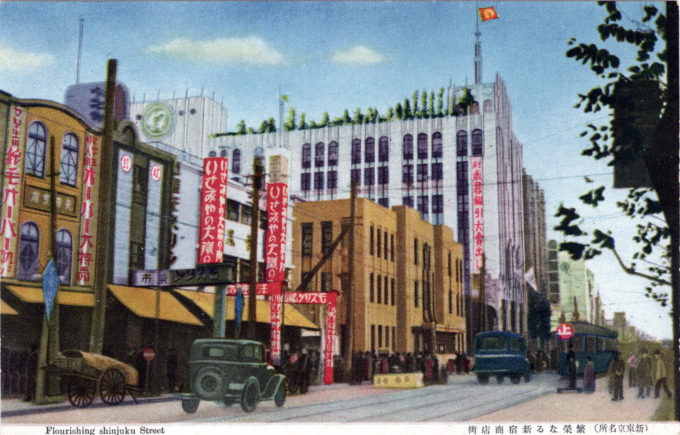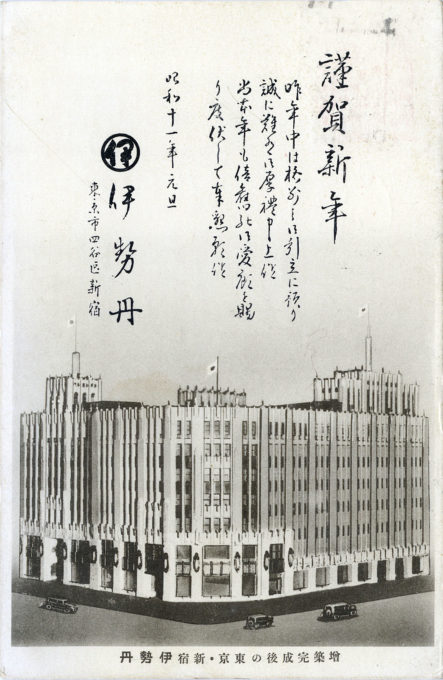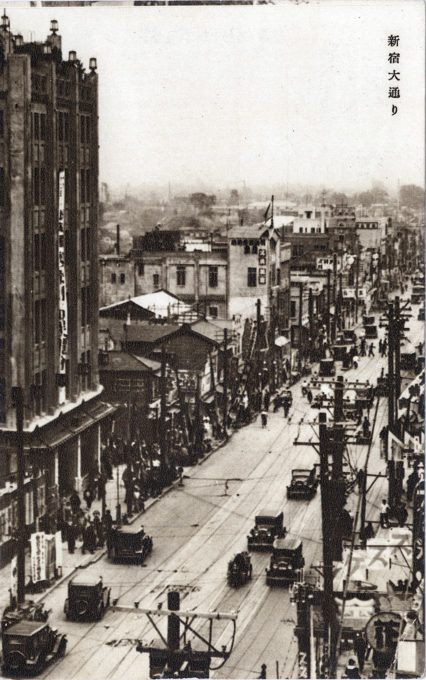See also:
The bustling main street of Shinjuku, c. 1930
View of Shinjuku at Night, c. 1960
Shinjuku Station, c .1930
“In common with other top Japanese department stores, Isetan traces its origins back to a kimono shop. Whereas Mitsukoshi, Daimaru, and Takashimaya have histories going back hundreds of years, Isetan’s story begins in 1886 with the opening by Tanji Kosuge of the ‘Iseya Tanji Drapery’ in Tokyo’s Kanda district.
“Kanda was one of the most densely populated areas of the city, and the new shop’s location near a busy intersection guaranteed it a steady stream of business. Because of the shop’s proximity to several well-known geisha districts, Kosuge’s customers included many geisha who needed to maintain a well-stocked wardrobe of fine kimonos. So successful had he been that by the turn of the century, the Iseya Tanji Drapery had entered the ranks of Tokyo’s top five dry goods stores.
“… In an effort to bring the store’s image more in line with those of its rivals, in 1907 [Kosuge] simplified the store’s name to ‘Isetan Drapery’, combining the first two syllables of Iseya with the first syllable of his surname, Tanji. Three years later, he considered building a department store in Tokyo’s Hibiya district but shelved the idea as premature. At Kosuge’s death in 1916, Isetan was well-established as a kimono store, but had yet to make the switch to a department store.
“By 1928 it was clear that there was no future in the kimono business for Isetan in Kanda. It abandoned a project to build a new eight-story building as a department store there and, although four stories of the building had been completed, began looking for an alternative site. Hibiya, in downtown Tokyo, was considered once more, but after the founder’s son-in-law, Tanji Kosuge II, had spent three days surveying the proposed site, he decided that there would not be enough customers and continued the search elsewhere. His eventual choice was Shinjuku, in the west of Tokyo, an area that had begun to develop after the opening of Shinjuku Station in 1875, but which had really taken off after the Great Kanto Earthquake in 1923.
“Isetan opened its new Shinjuku flagship store in 1933. It was a decision that was to be as important for Shinjuku as it was for Isetan, and the two have grown in tandem ever since.”




